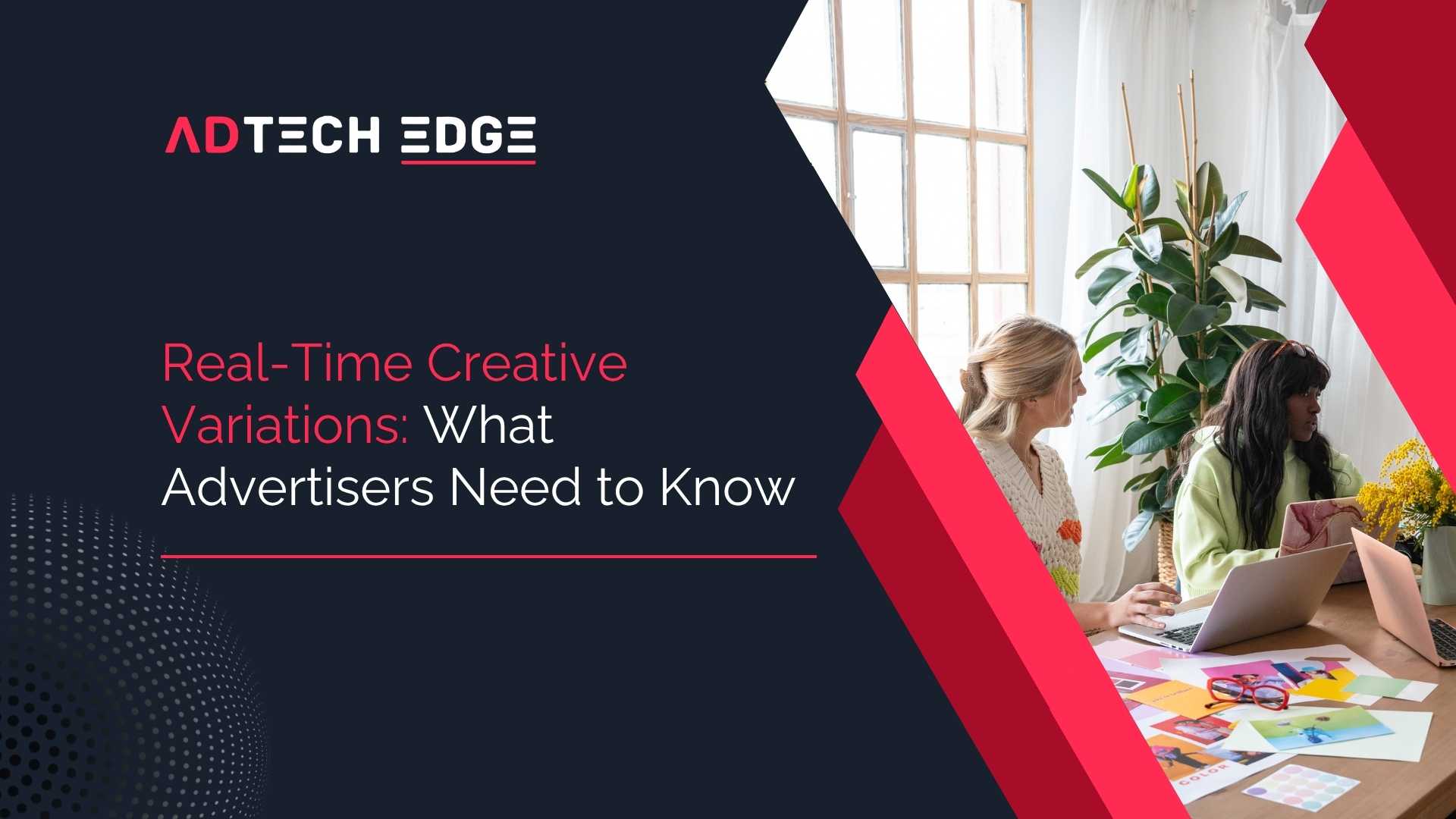You’re scrolling through your social media feed during a rainy Tuesday afternoon, and an ad pops up showing a steaming hot cup of coffee with the caption, “Perfect weather for coffee.” Moments later, someone in another city, enjoying the sunshine, sees the same brand’s ad, but theirs features an iced coffee with the line, “Stay cool and caffeinated.” We are part of a live, dynamic advertising campaign known as Real-Time Creative Variations.
Why are real-time creative variations significant? Whether you’re running a campaign or a product launch, relevance impacts performance. With Real-Time Creative Variations, you can deliver experiences that respond to consumers in the moment.
This article will examine the necessity for real-time creative variations and their importance to advertisers.
Why Real-Time Creative Variations Matter in Advertising
Here are the reasons why real-time creative variations are a competitive advantage.
1. Drives Higher ROI Through Precision Targeting
Real-time creative variations enable your campaigns to adapt to user behavior, location, device, or industry.
Example: A cloud services firm can show tailored messaging to IT directors in manufacturing versus healthcare.
Why it matters: Precision leads to higher conversion rates and stronger ROI, metrics leadership cares about.
2. Reduces Ad Fatigue and Maximizes Media Spend
Real-time creative variations ensure your creatives stay fresh by rotating or personalizing content based on what resonates best.
Example: A cybersecurity company can rotate headlines such as “Secure Your Remote Team” and “Prevent Data Breaches” based on current trends.
Why it matters: You get more mileage out of your media investments without increasing budget, aligning with cost efficiency.
3. Accelerates Buyer Journeys with Contextual Messaging
Delivering the right message at the right moment can reduce friction in the sales funnel.
Example: A SaaS platform can adapt creatives based on funnel stage, such as showing thought leadership to first-time visitors and product demos to returning decision-makers.
Why it matters: It shortens sales cycles and increases qualified pipeline critical for growth.
4. Supports Global Scalability Without Compromising Local Relevance
With real-time creative variations, global campaigns can stay consistent while adapting to local market needs.
Example: A professional services firm can deliver region-specific success stories or regulatory messaging without launching separate campaigns.
Why it matters: This balances brand control with local nuance, a key concern for managing global brand equity.
5. Enables Agile, Data-Driven Decision Making
With real-time creative variations, creative performance can be adjusted in response to real-time analytics.
Why it matters: C-suite leaders can rely on real-time dashboards for faster insights and decision-making.
Benefits for Advertisers with Real-Time Creative Variations
Here are the key benefits of Real-Time Creative Variations in advertising.
1. Increases Engagement with Relevant Messaging
Ads that match the viewer’s industry, behavior, or interests are likely to get noticed.
Example: A software company selling automation tools can display different headlines to marketing teams (“Automate Campaigns in Minutes”) and to IT managers (“Secure, Scalable Integrations”) within the same campaign.
Benefit: Higher engagement rates, lower bounce rates, and increased time spent on landing pages.
2. Improves Conversion Rates Across the Funnel
By delivering the right message at the right time, it can guide users through the buyer journey.
Example: A cybersecurity vendor can show awareness-stage messaging to new users (e.g., “Learn About Cloud Security”) and demo offers to returning users who’ve visited the pricing page.
Benefit: Better lead quality, increased demo requests, and shorter sales cycles.
3. Reduces Creative Production Time and Cost
Instead of manually creating multiple versions of ads, it automates the variation process using a core set of assets.
Example: A consulting firm can reuse base templates and insert industry names, client logos, or pain points into display ads.
Benefit: Lower design and production costs, and faster delivery to market.
4. Optimizes Campaign Performance in Real-Time
Creative variations can be tested and adjusted based on live performance data.
Example: A SaaS provider running a paid campaign can identify which CTA or product angle is working and scale it.
Benefit: Improved ROI with real-time insights and smarter ad spend allocation.
5. Supports Personalization at Scale
Real-time creative variations enable advertisers to target niche audience segments with tailored messaging, eliminating the need for multiple campaigns.
Example: A global HRTech brand can run one campaign that adapts based on job title, region, or industry.
Benefit: Scalable personalization that enhances user experience without overloading internal teams.
Real-Time Creative Variations vs. Personalization vs. Automation
Here’s how all three of them differ and complement each other.
1. Real-Time Creative Variations: The Dynamic Delivery Layer
Real-time creative variations focus on adjusting ad elements, such as headlines, visuals, and CTAs, based on data including location, time of day, or user behavior.
Example: A SaaS platform runs a display campaign that shows different taglines depending on the user’s industry. A finance executive sees “Automate Compliance Workflows,” while a retail executive sees “Streamline Inventory Processes.”
How it works with others: Real-time content variations use personalized content (from personalization strategies) and rely on automation (to deliver it at scale and speed).
2. Personalization: The Strategy Behind Relevance
Personalization is the strategy of tailoring content, messaging, or experiences based on user data such as company size, industry, job role, or past interactions.
Example: A cybersecurity firm segments its audience into CIOs, IT managers, and compliance officers, each receiving targeted ads that address their specific pain points.
How it works with others: Personalization feeds content rules into real-time content variations defining which variation should be shown to which audience and is executed through automation.
3. Automation: The Execution Engine
Automation uses software to execute tasks such as scheduling, segmentation, A/B testing, and creative delivery.
Example: A marketing automation tool selects which creative to serve in an email or ad campaign based on CRM data such as buyer’s journey stage or recent activity.
How it works with others: Automation powers real-time creative variation and personalization by ensuring the right creative is delivered at the right time and in the right place.
Conclusion
Real-time creative variations are the shift from static campaigns to a creative ecosystem that responds to your audience as quickly as they respond to you. Ready to make your advertising dynamic, data-driven, and future-ready? Start exploring how Real-Time Creative Variations can transform your campaigns today.



